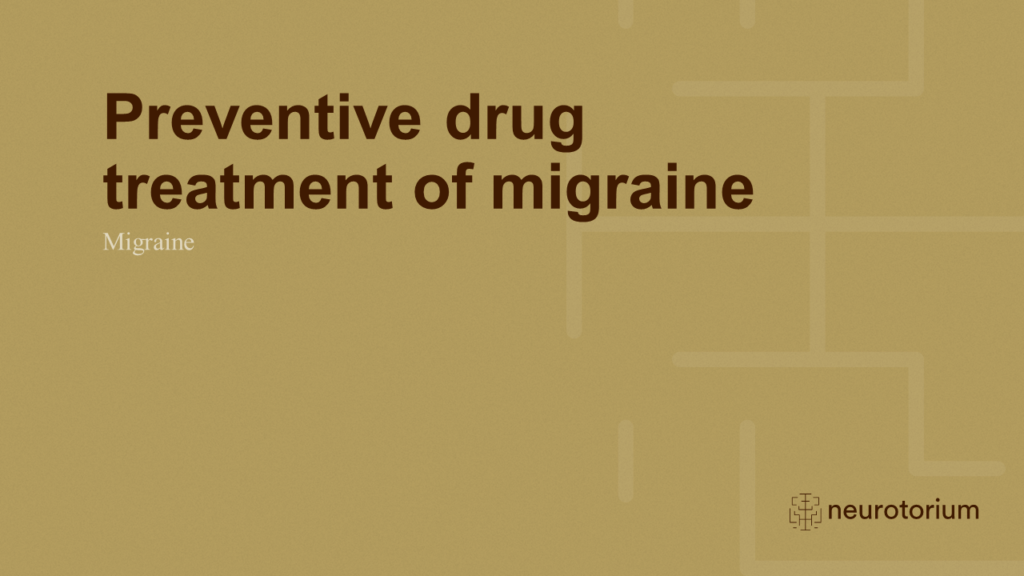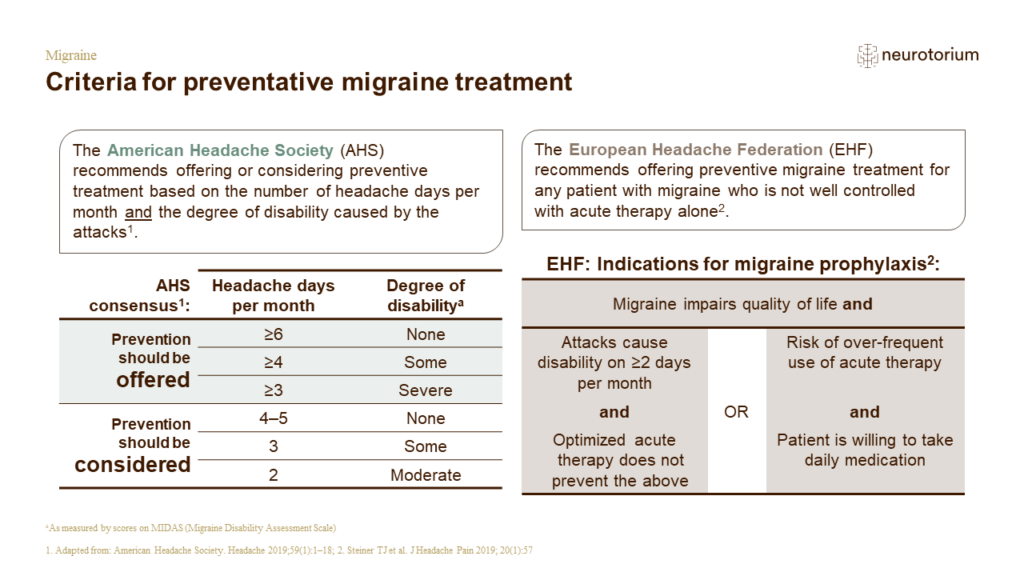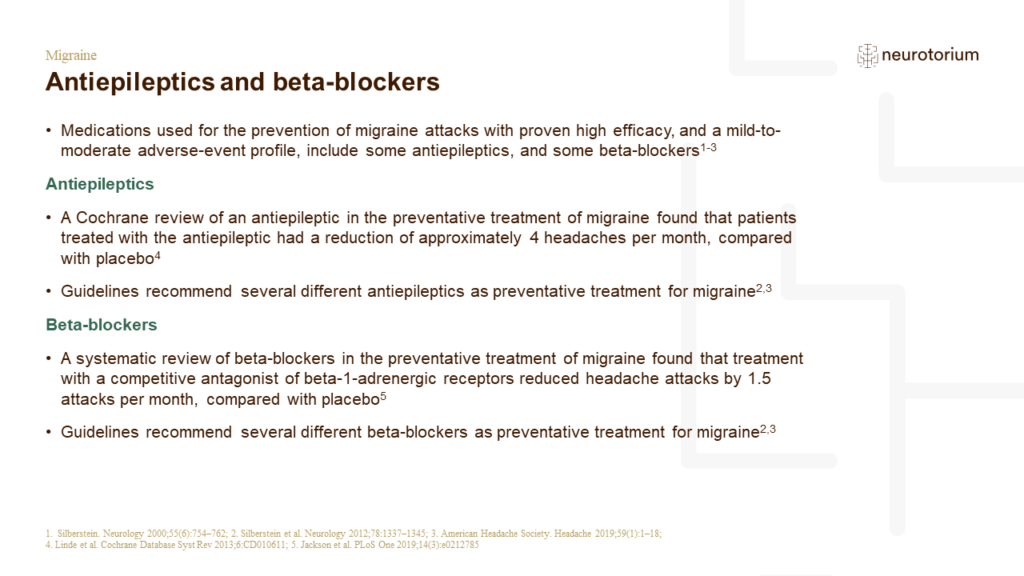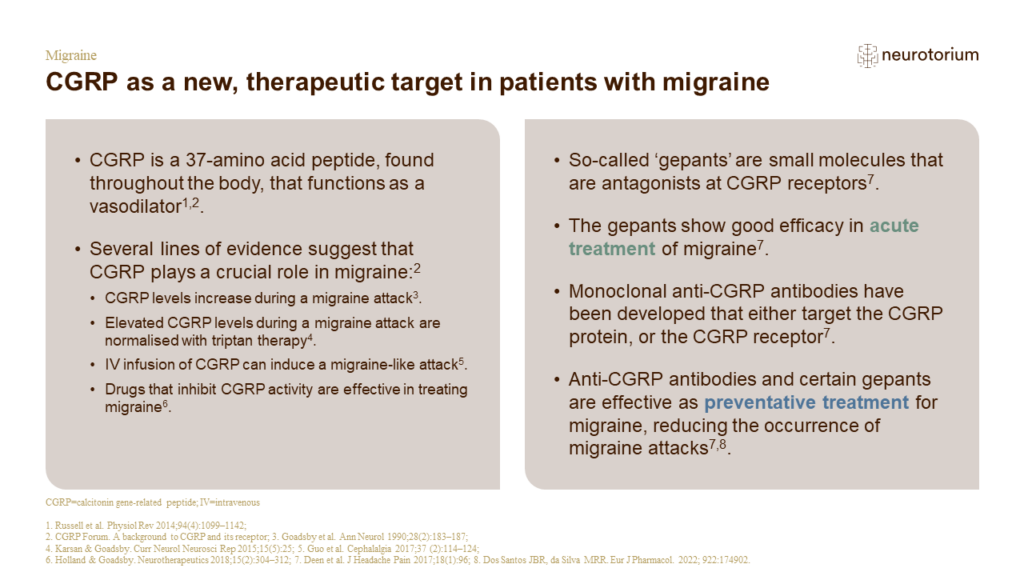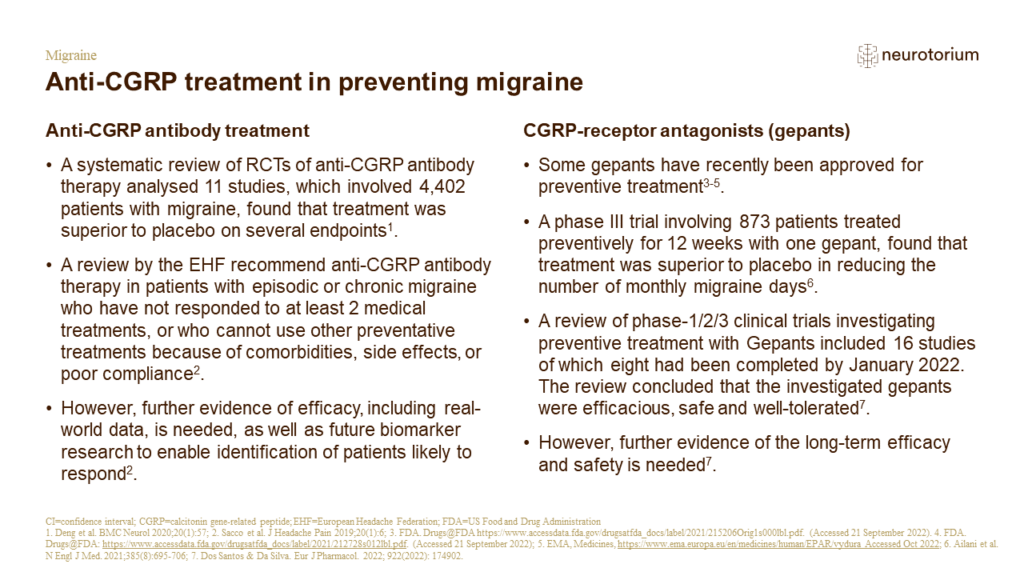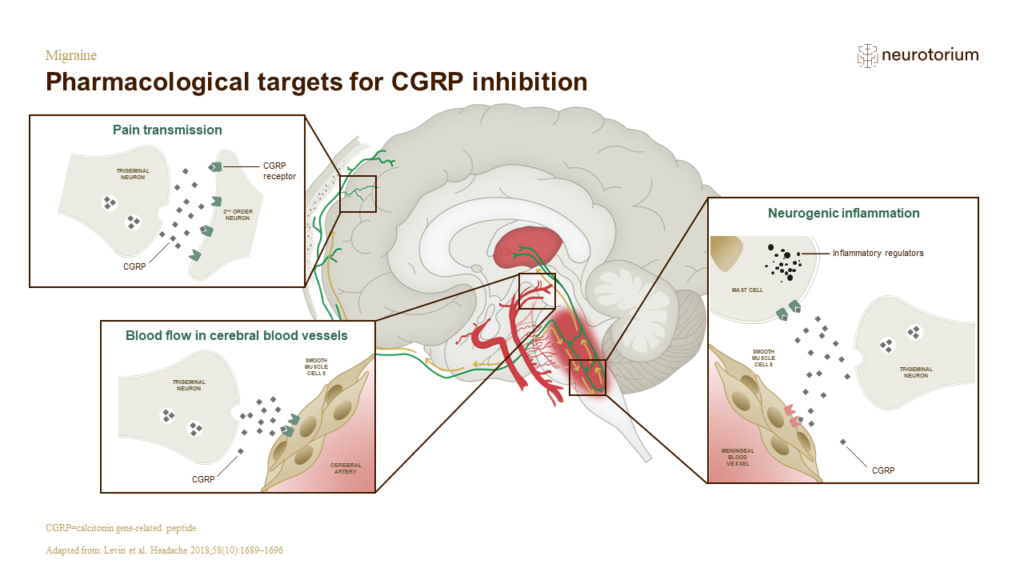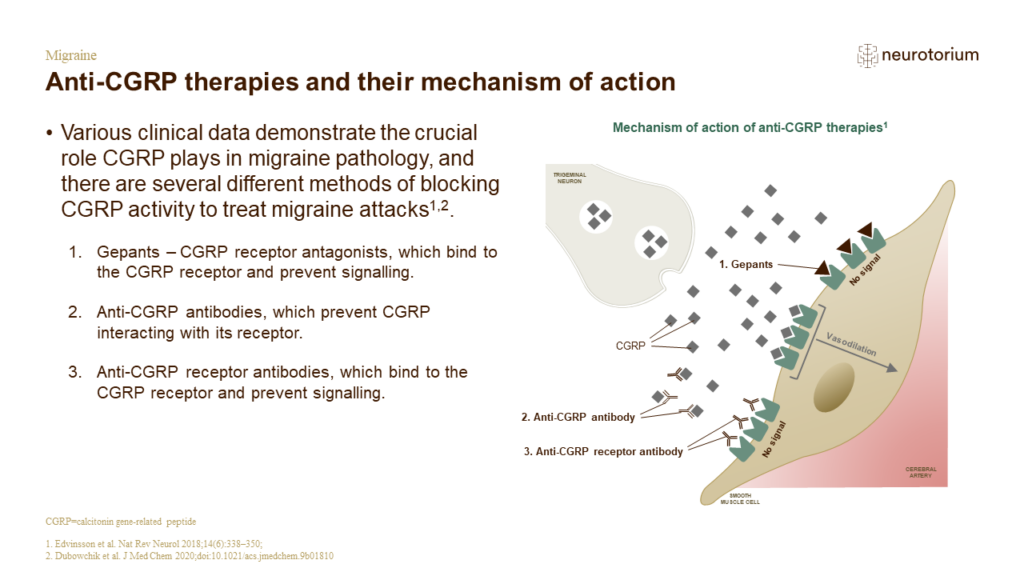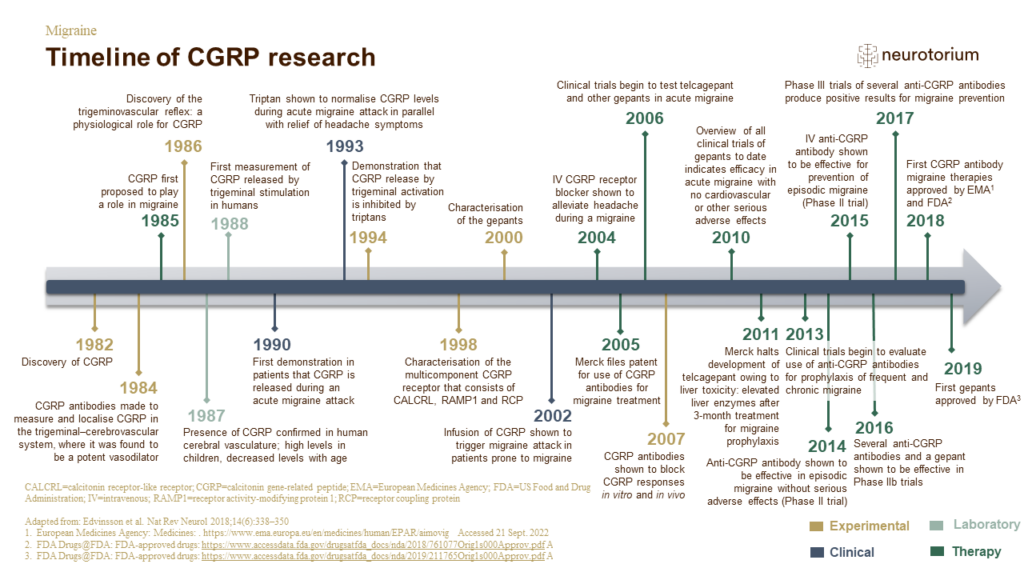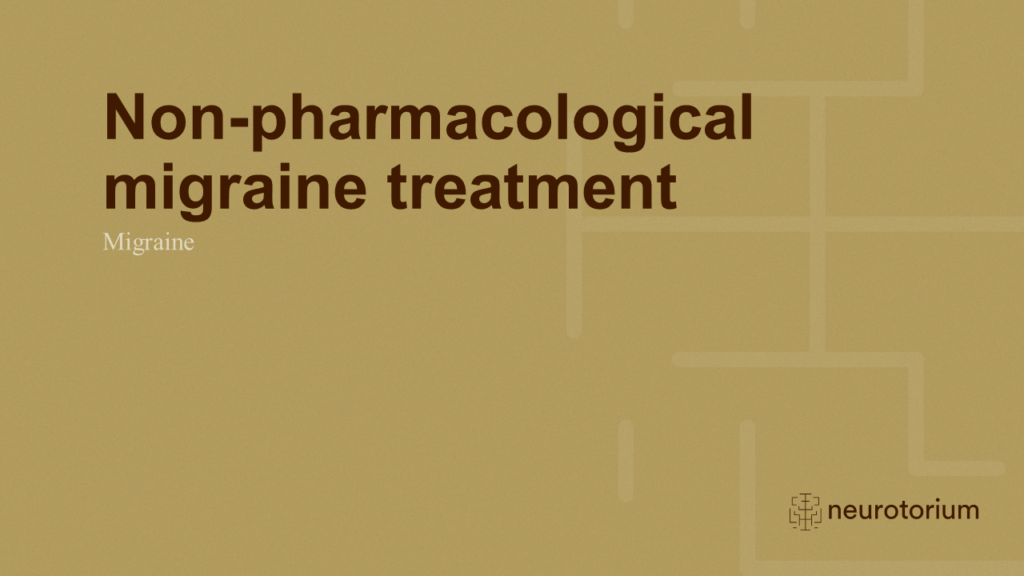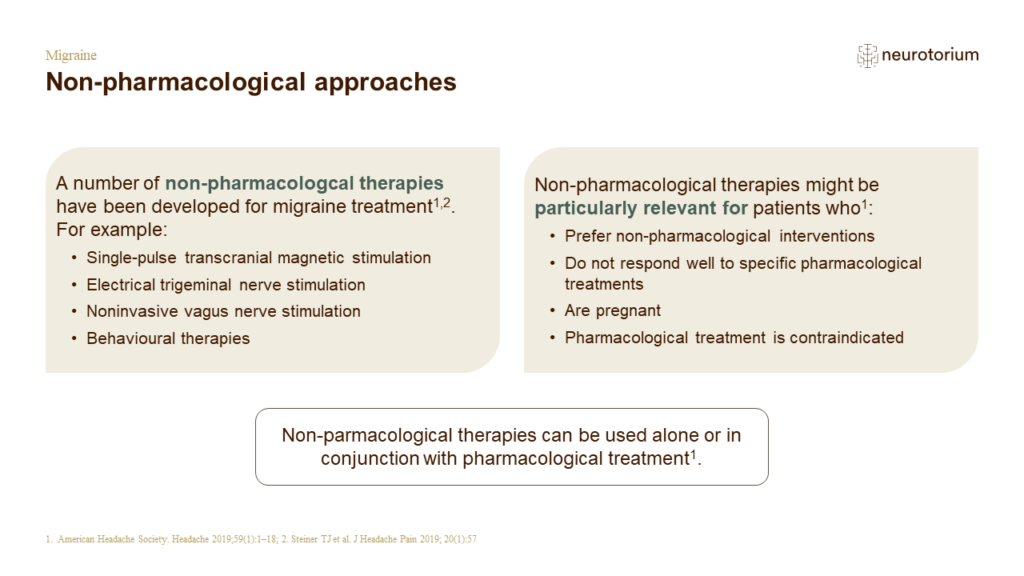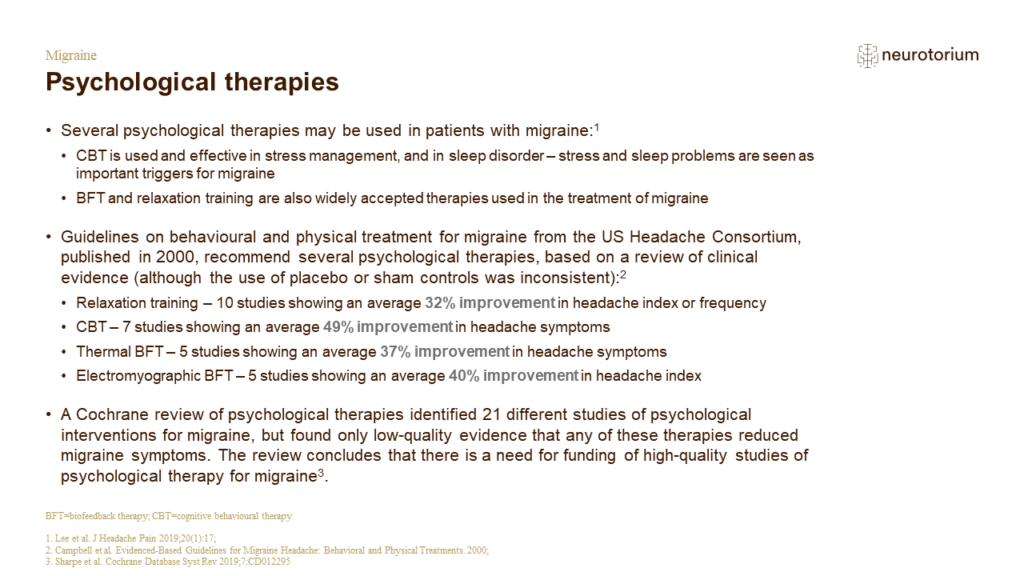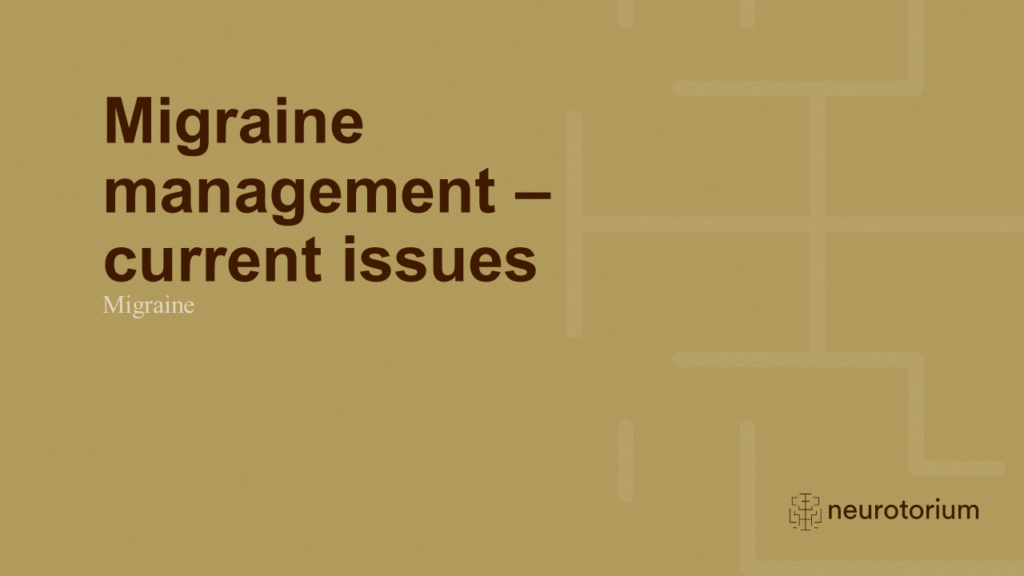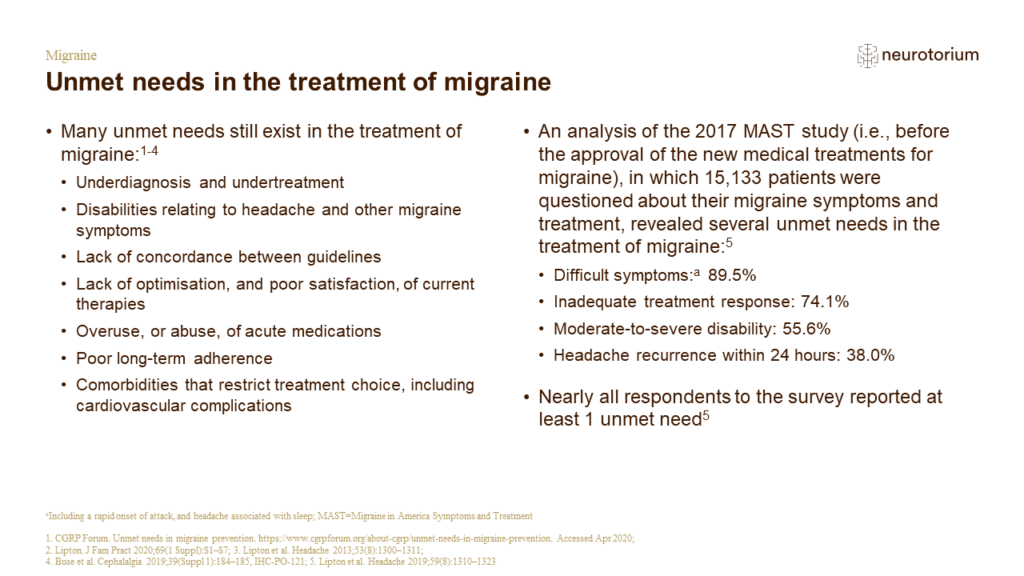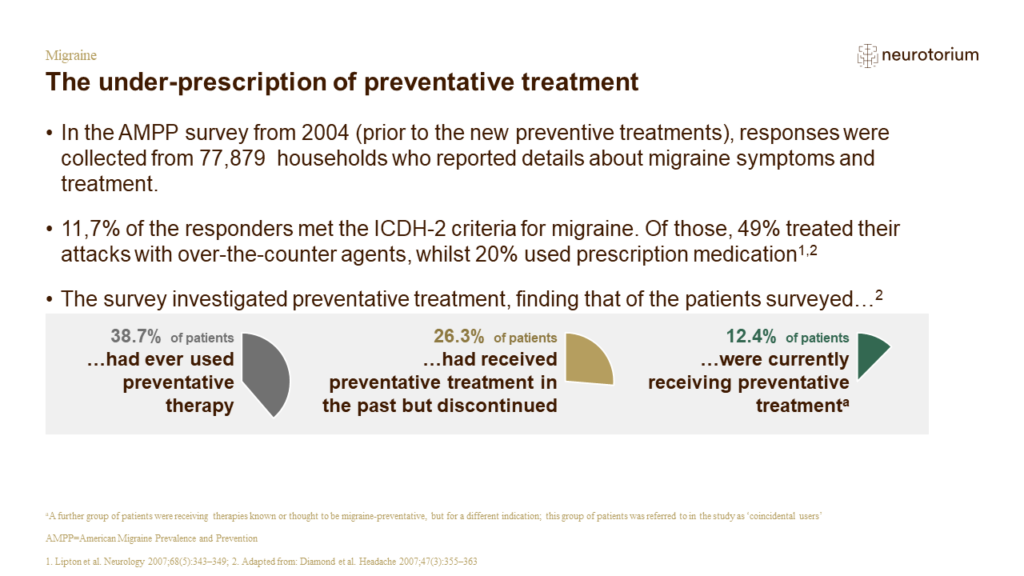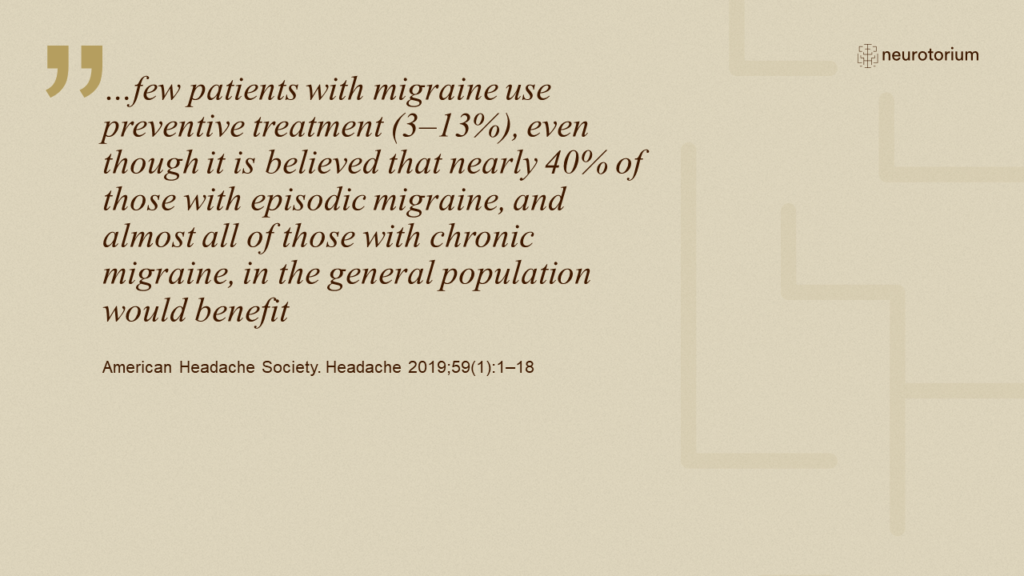Index for
slide deck
Introduction
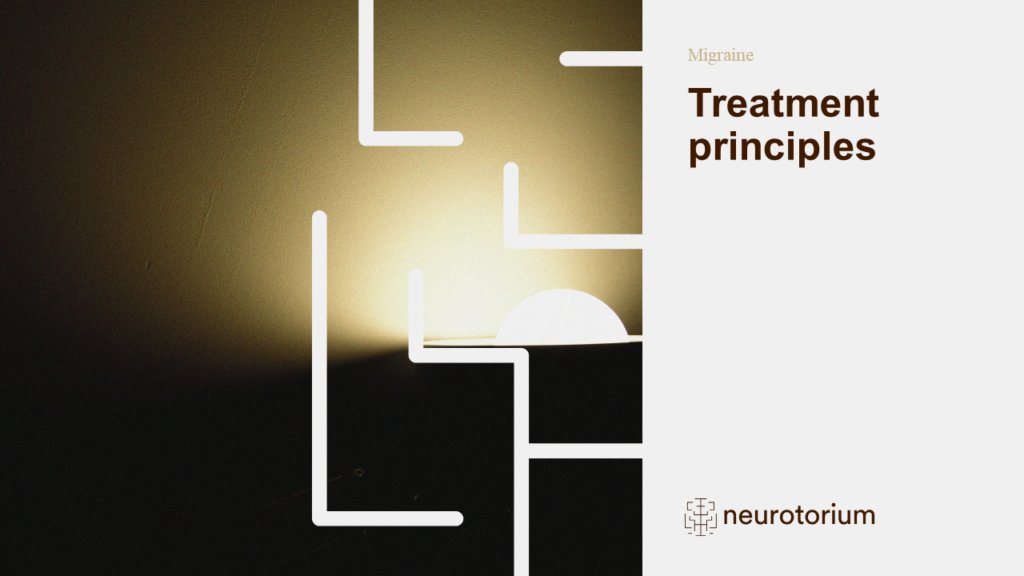
Treatment principles
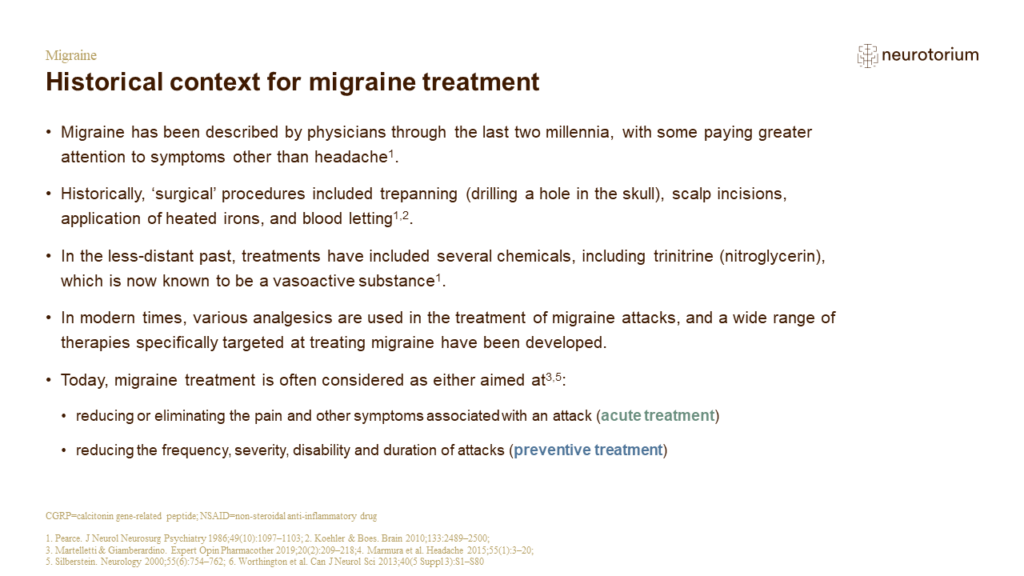
Historical context for migraine treatment
There have been many historical approaches to treating headaches,[Koehler & Boes, 2010; Pearce, 1986] but modern approaches centre around the use of analgesics, NSAIDs, and more targeted therapies, such as triptans and CGRP related agents.[Martelletti & Giamberardino, 201…
Migraine treatment and management
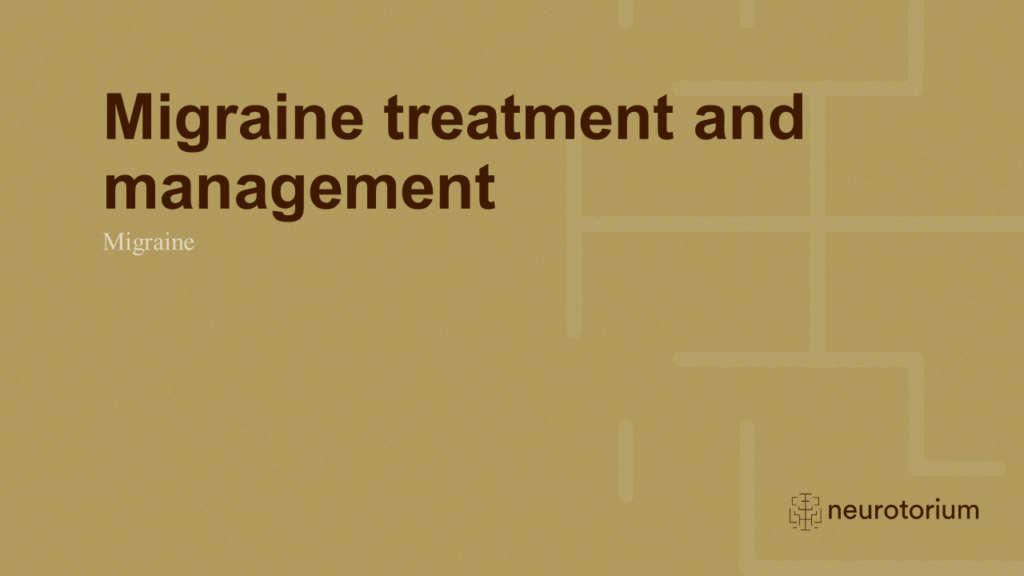
Migraine treatment and management
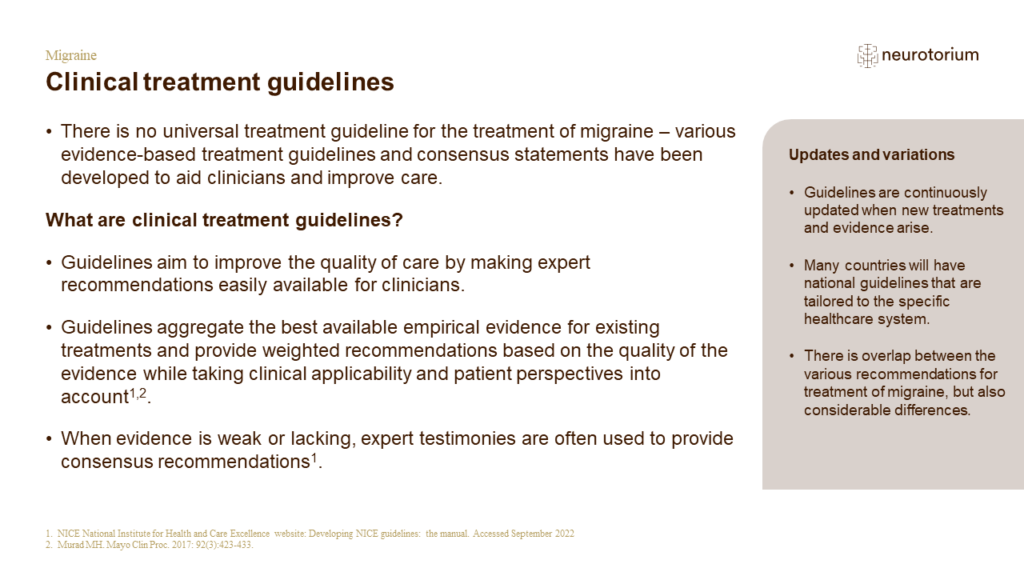
Clinical treatment guidelines
Clinical guidelines for the treatment and management of migraine aim to aid clinicians and thereby improve care. Variations in the weight given to different empirical data and their consequences for clinical practice influence the guidelines, and consequently, at the mome…
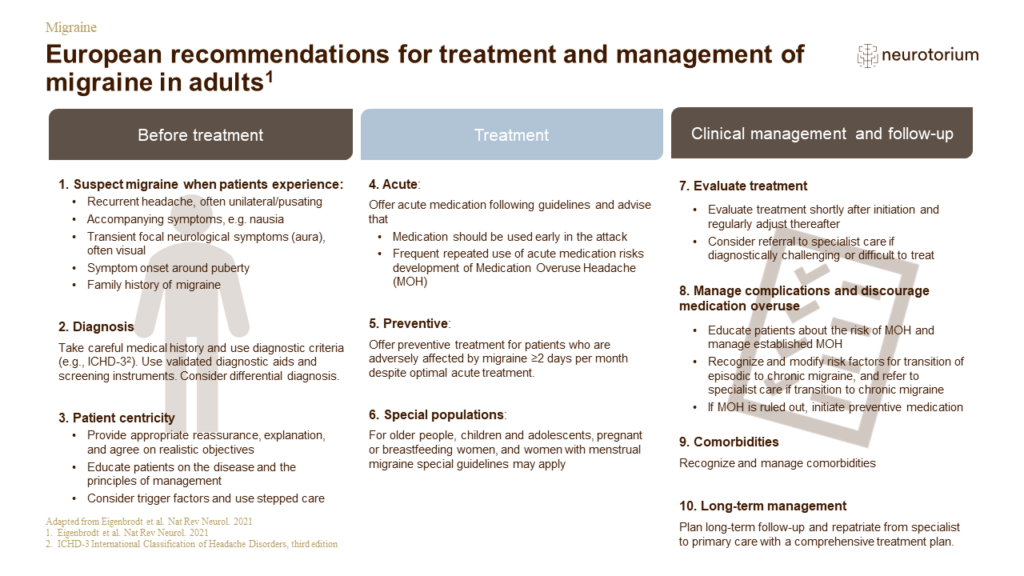
European recommendations for treatment and management of migraine in adults
A consensus statement from 2021, endorsed by the European Headache Federation and the European Academy of Neurology, introduce ten steps to diagnose and manage migraine [Eigenbrodt et al., 2021]. The importance of having a patient centeret approach, prioritizing patient e…
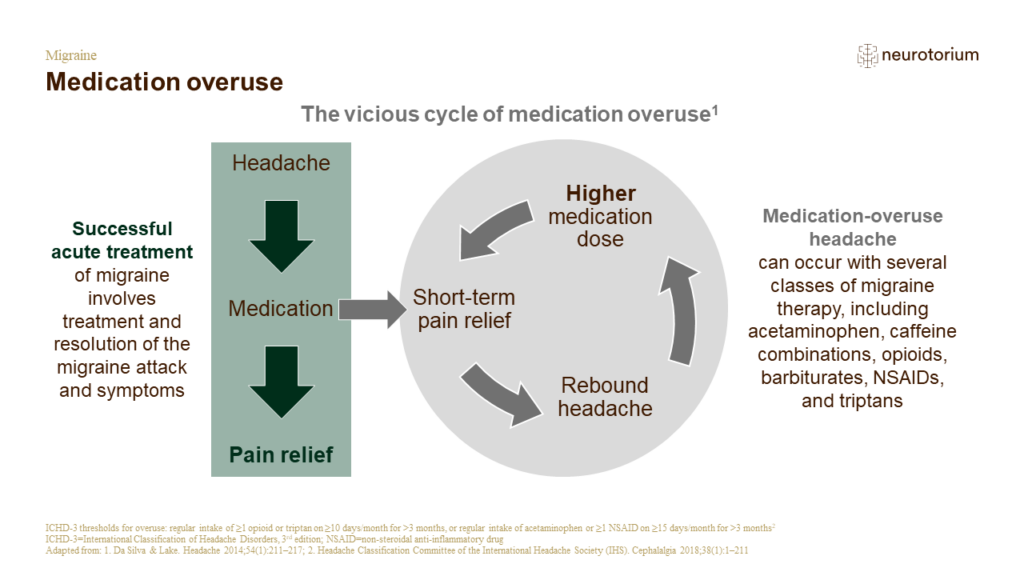
Medication overuse
Although not fully understood, the use of certain medications in certain individuals is thought to lead to structural and/or functional brain changes, altering their susceptibility to headaches and migraine.[Chong, 2020; Da Silva & Lake, 2014; Kocasoy Orhan, 2019] Over ti…
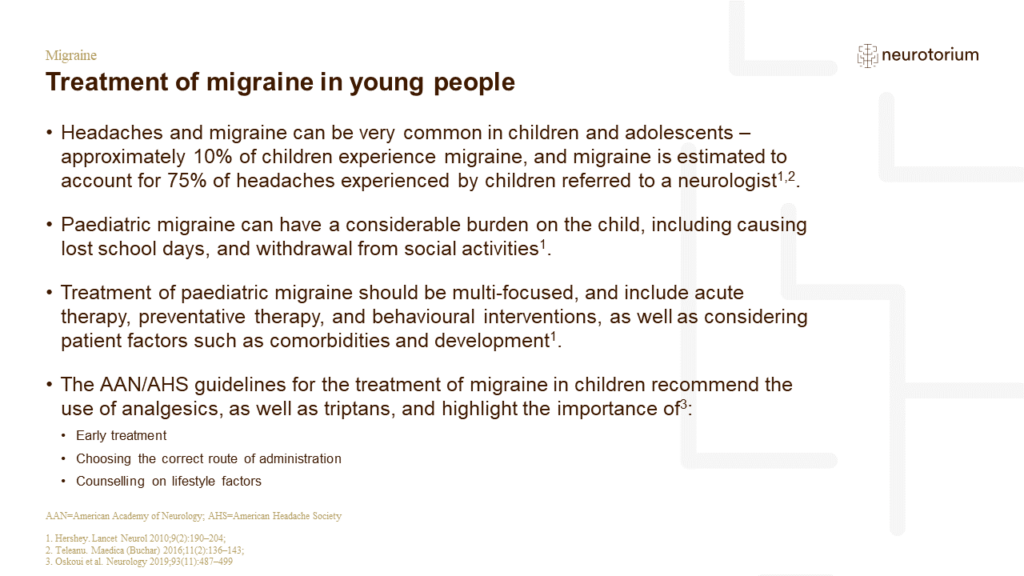
Treatment of migraine in young people
Migraine in children is a common and disabling disease.[Hershey, 2010; Teleanu, 2016] The prevalence of migraine is thought to increase throughout childhood, and peak post-puberty – perhaps accounted for by menstrual migraine in girls.[Teleanu, 2016] Only a minority of ch…
Pharmacological treatment of acute migraine
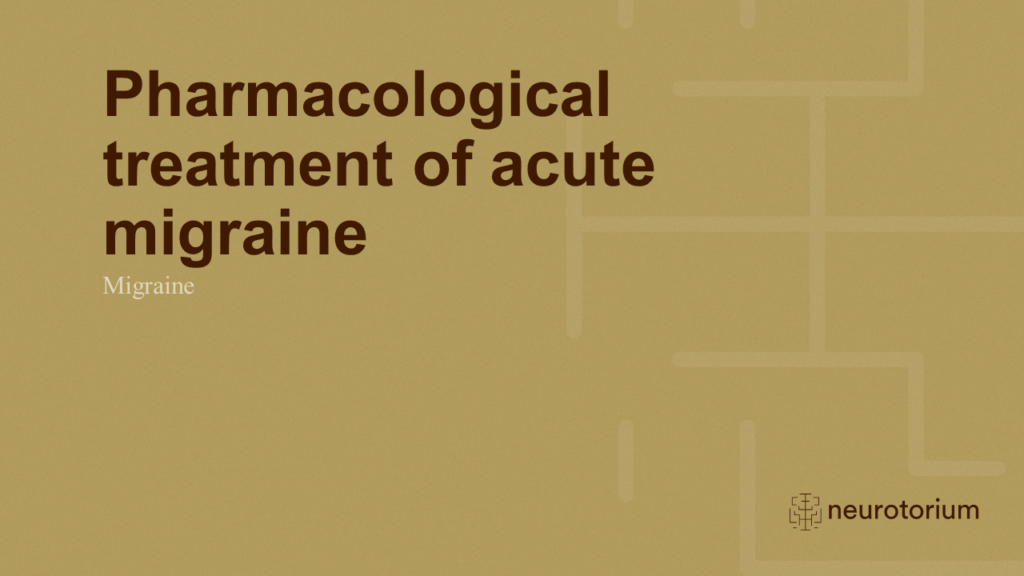
Pharmacological treatment of acute migraine
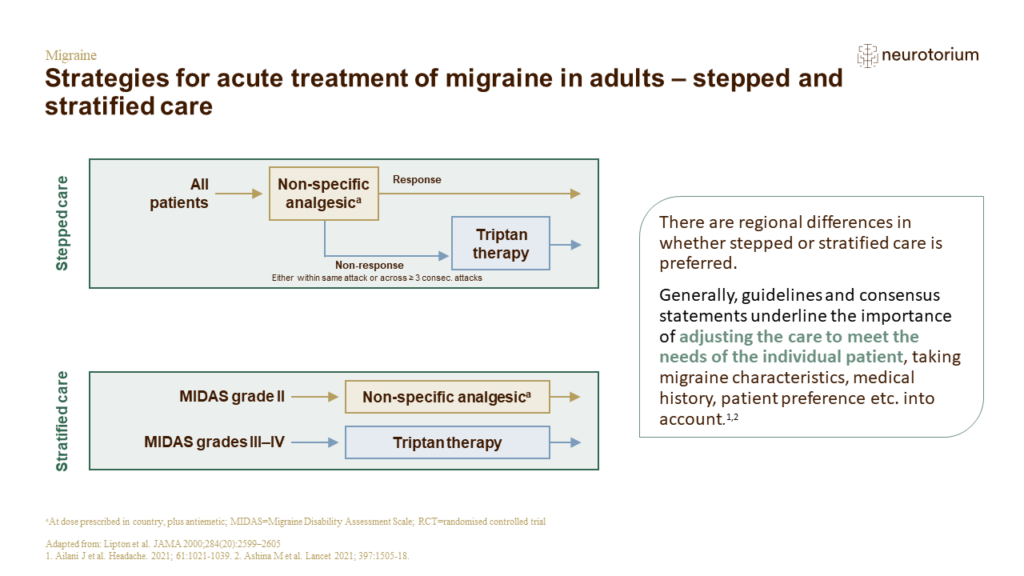
Strategies for acute treatment of migraine in adults – stepped and stratified care
In stepped care: [Lipton et al., 2000]
• Acute treatment starts with simple analgesics.
• If there’s insufficient or no response, the patient is offered migraine specific treatment.
Stepped care can be applied within or across attacks.[Ashina et al., 2021; Lipton et al., 2…
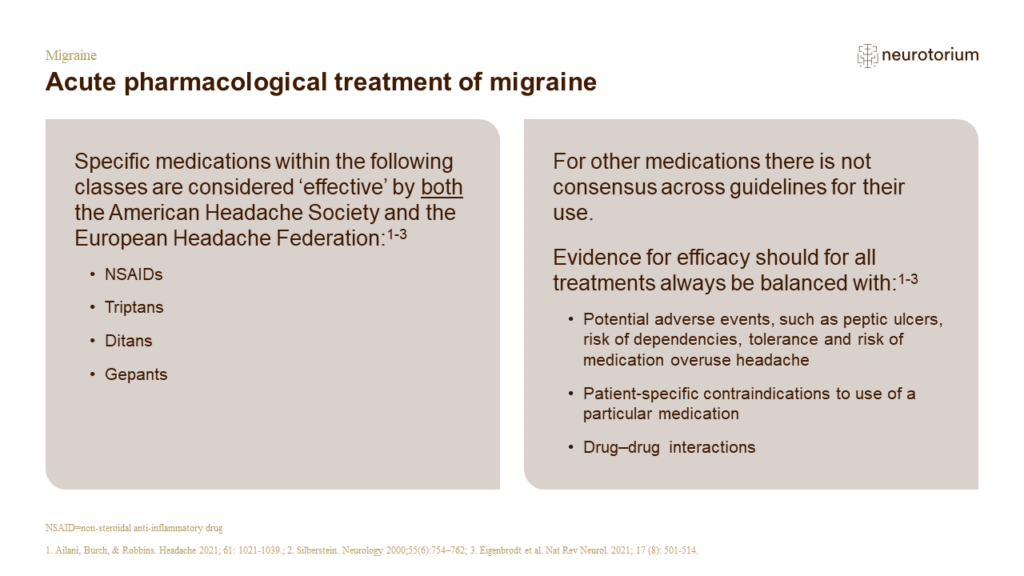
Acute pharmacological treatment of migraine
Treatment guidelines and consensus statements for the treatment of migraine has been published by The American Academy of Neurology (AAN), jointly with several organisations including the American Headache Society (AHS), and by the European Headache Federation (EHF), endo…
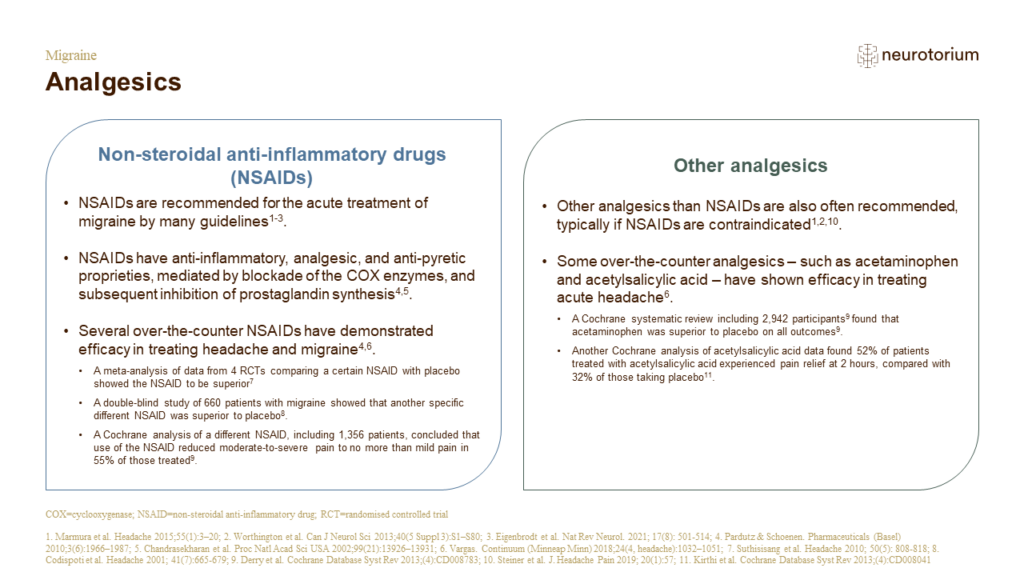
Analgesics
Both European, American and Canadian treatment guidelines rank the evidence supporting some NSAIDs and other analgesics as high – that is, established as effective for acute migraine treatment based on available evidence.[Marmura et al., 2015; Worthington et al., 2013] Co…
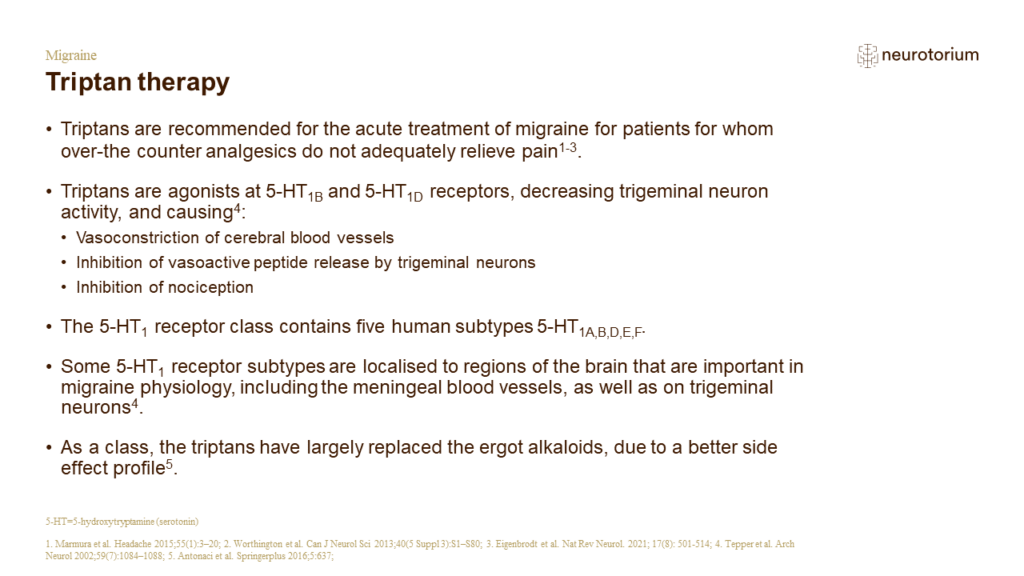
Triptan therapy
Treatment guidelines for migraine rank the evidence supporting triptan therapy in the highest tier – that is, established as effective for acute migraine treatment based on available evidence.[Marmura et al., 2015; Worthington et al., 2013] Individual triptan therapies ha…
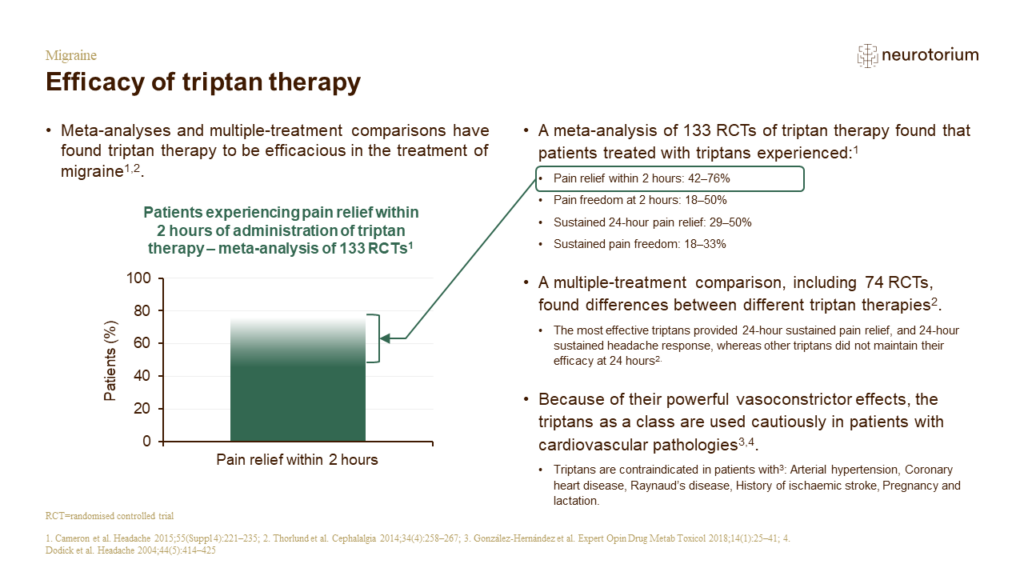
Efficacy of triptan therapy
In meta-analyses, most triptan therapies were found to be more effective than NSAIDs, ergots, and certain analgesics.[Cameron et al., 2015; Thorlund et al., 2014] However, among the triptan therapies, multiple-treatment comparison modelling has revealed a hierarchy of eff…
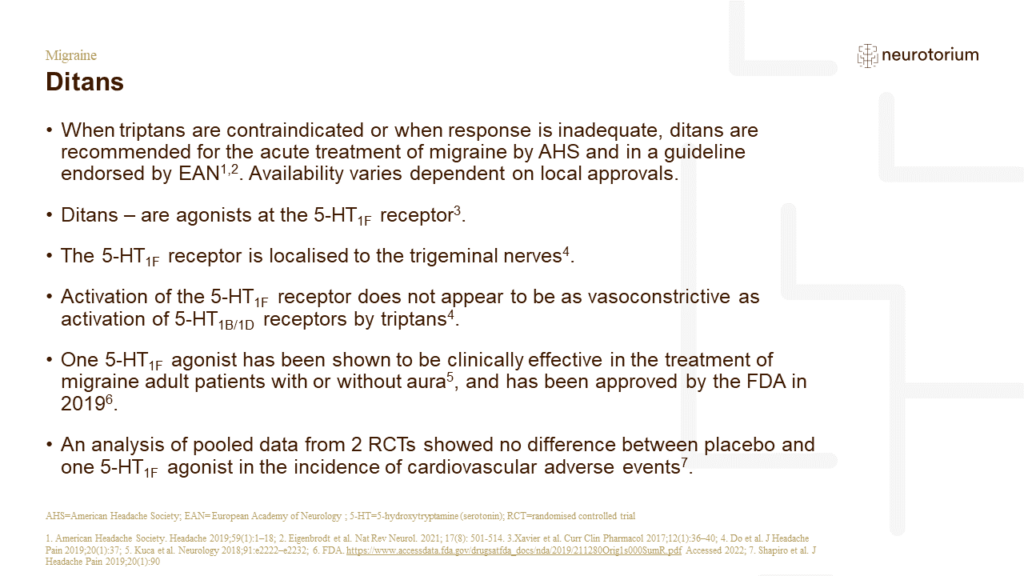
Ditans
The cardiovascular adverse effects of triptans – described as their ‘Achilles’ heel’ – led to the development of the ditans (selective serotonin receptor 1F agonists).[González-Hernández et al., 2018] Ditans appear to lack the strong vasoconstrictor effects seen with trip…
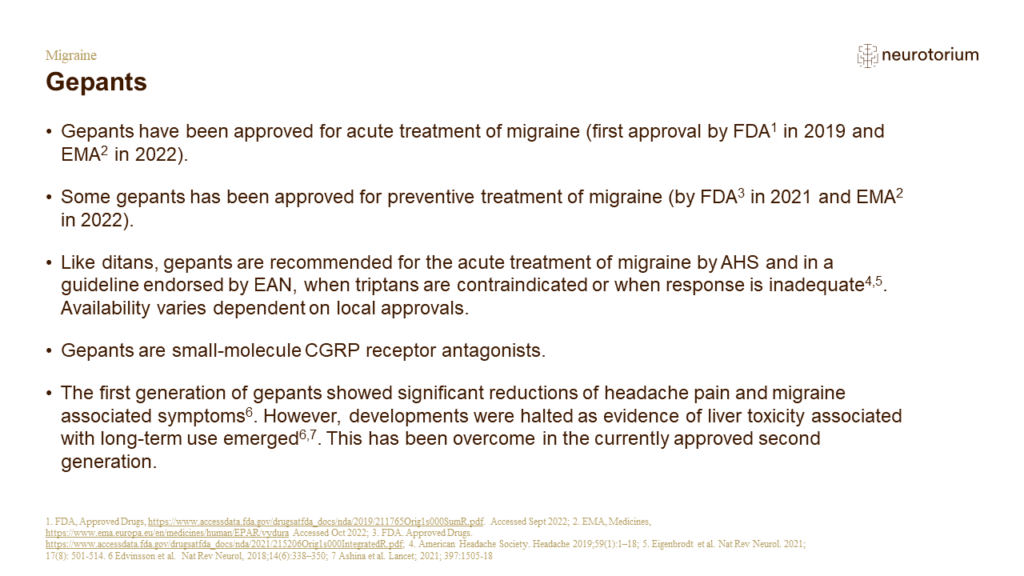
Gepants
Nonpeptide CGRP receptor agonists are called gepants. Gepants are a newer class of drugs, some of which have recently been approved by the FDA and EMA for the acute treatment of migraine in adults [Ashina et al. 2021; EMA, 2022; FDA, 2022].
References:
Ashina M, Buse DC, A…
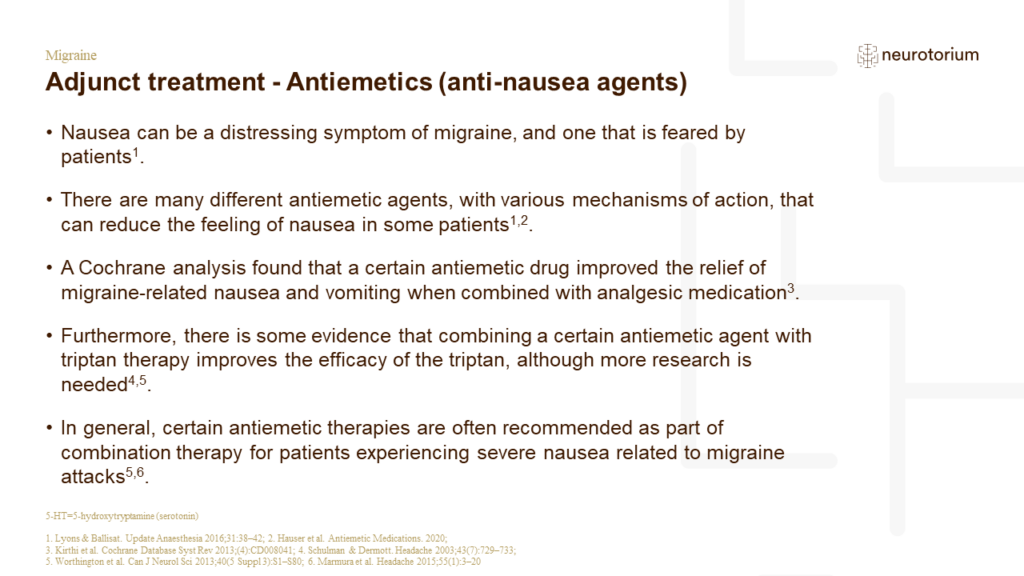
Adjunct treatment - Antiemetics (anti-nausea agents)
Treatment guidelines recommend the use of antiemetics as adjunctive therapy – an add on to the antimigraine therapy.[Marmura et al., 2015; Worthington et al., 2013] Certain antiemetics are strongly recommended alongside migraine medication in patients with migraine for th…
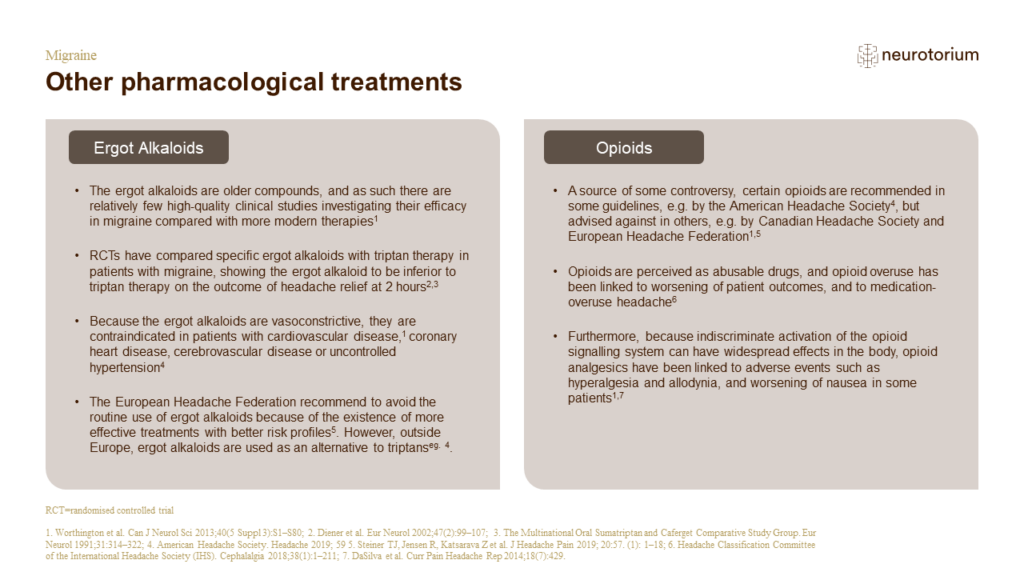
Other pharmacological treatments
Treatment guidelines rank the evidence supporting individual ergot alkaloids as ranging from strong to relatively poor. Some guidelines recommend the use of ergot alkaloids in treating migraine, albeit weakly.[Marmura et al., 2015; Worthington et al., 2013]
However, many …


